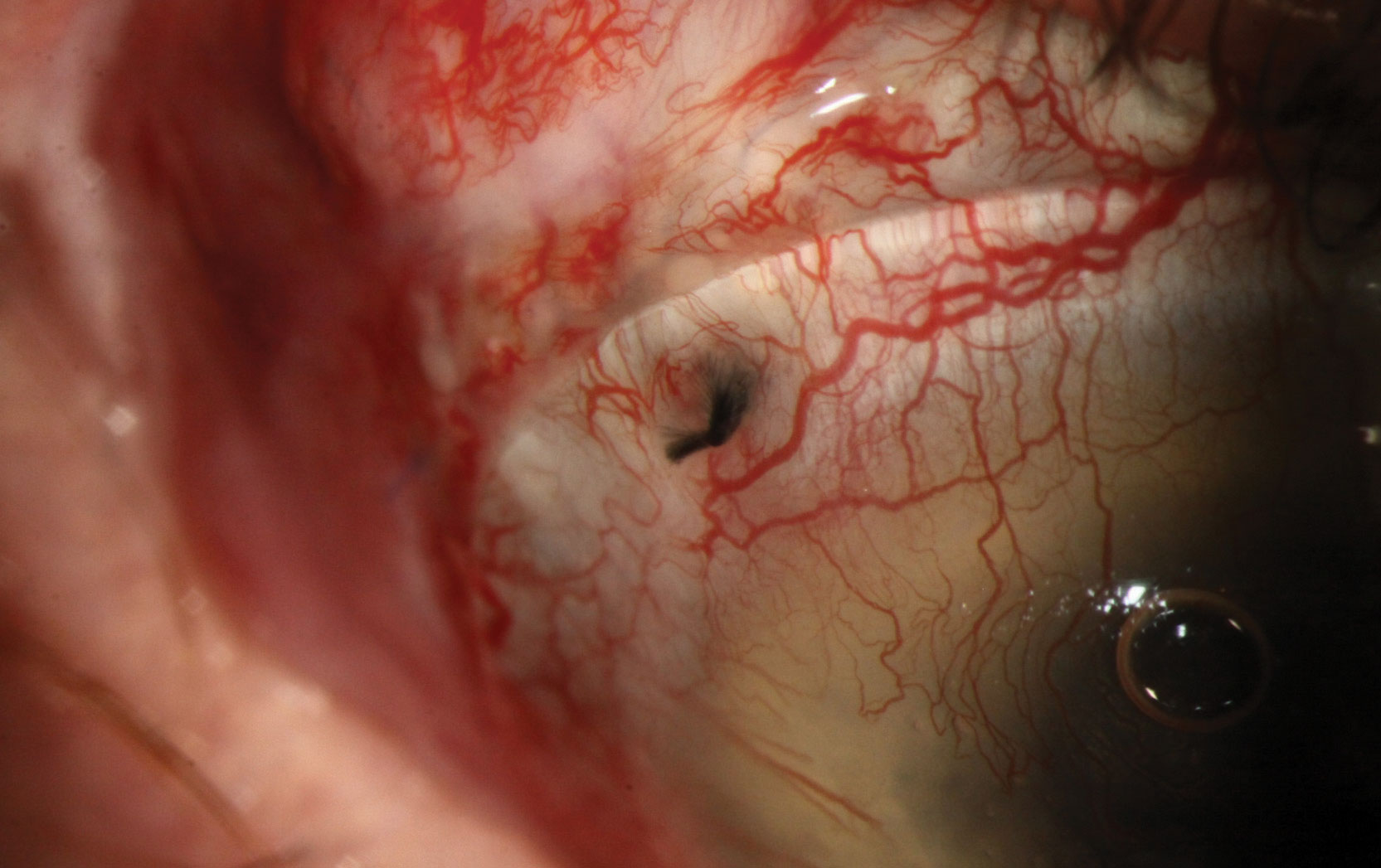 |
An 18-year-old male with Stevens-Johnson syndrome presented after glaucoma tube explantation secondary to tube exposure and endophthalmitis. The patient was suffering from a persistent corneal epithelial defect and was referred for scleral lens fitting to aid in corneal healing of his only remaining eye.
The conjunctival wound had been closed with three running 8-0 vicryl sutures with episcleral bites to anchor to the underlying sclera. There was a suture knot with long tails under the conjunctival flap. An elevation-specific lens was created with extra clearance over the knot and the corneal epithelial defect was closed within days. The patient remained on all postoperative antibiotics, steroids and glaucoma meds during scleral lens wear. At follow up, the suture tails were splayed out under the scleral lens haptic; however, there was no staining or erosion of the conjunctival tissue.
Contact lenses are commonly fit over ocular sutures. When doing so, it is important to follow the patient closely for suture erosion, which may be a vector for infection.
 |
| Click image to enlarge. |
Vicryl (polyglactin 910) is an absorbable suture that holds its tensile strength for approximately 21 days and is completely absorbed within 56 to 70 days. It is used for subcutaneous tissue, muscle reattachment, cornea and conjunctival procedures. It undergoes hydrolytic degradation and has been known to elicit inflammatory reactions. Granulomas may form around vicryl conjunctival/scleral sutures.
It is a braided material, which accounts for the splayed appearance seen in this patient. He will need to be refit with a new elevation-specific lens design once the suture is absorbed and the surgical inflammation is reduced.
Ethilon (nylon) is a non-absorbable monofilament material commonly used for corneal transplants. This material will remain in the cornea until removed. Fortunately, it is inert, with minimal tissue reaction.


